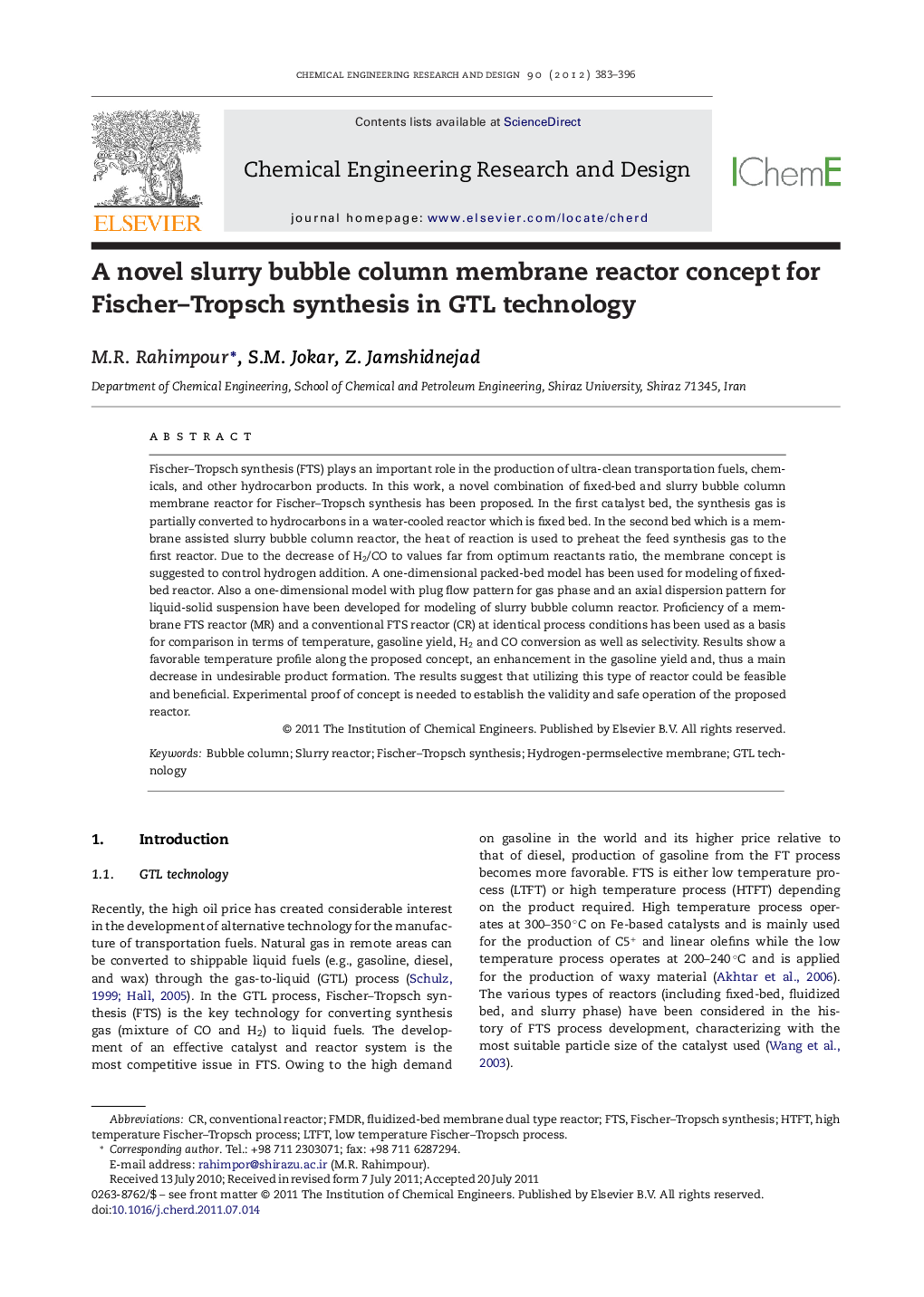| Article ID | Journal | Published Year | Pages | File Type |
|---|---|---|---|---|
| 621992 | Chemical Engineering Research and Design | 2012 | 14 Pages |
Fischer–Tropsch synthesis (FTS) plays an important role in the production of ultra-clean transportation fuels, chemicals, and other hydrocarbon products. In this work, a novel combination of fixed-bed and slurry bubble column membrane reactor for Fischer–Tropsch synthesis has been proposed. In the first catalyst bed, the synthesis gas is partially converted to hydrocarbons in a water-cooled reactor which is fixed bed. In the second bed which is a membrane assisted slurry bubble column reactor, the heat of reaction is used to preheat the feed synthesis gas to the first reactor. Due to the decrease of H2/CO to values far from optimum reactants ratio, the membrane concept is suggested to control hydrogen addition. A one-dimensional packed-bed model has been used for modeling of fixed-bed reactor. Also a one-dimensional model with plug flow pattern for gas phase and an axial dispersion pattern for liquid-solid suspension have been developed for modeling of slurry bubble column reactor. Proficiency of a membrane FTS reactor (MR) and a conventional FTS reactor (CR) at identical process conditions has been used as a basis for comparison in terms of temperature, gasoline yield, H2 and CO conversion as well as selectivity. Results show a favorable temperature profile along the proposed concept, an enhancement in the gasoline yield and, thus a main decrease in undesirable product formation. The results suggest that utilizing this type of reactor could be feasible and beneficial. Experimental proof of concept is needed to establish the validity and safe operation of the proposed reactor.
Graphical abstractFigure optionsDownload full-size imageDownload high-quality image (107 K)Download as PowerPoint slideHighlights► A novel combination of fixed-bed and slurry bubble column membrane reactor for Fischer–Tropsch synthesis (FTS) has been proposed. ► Due to the decrease of H2/CO to values far from optimum reactants ratio, the membrane concept is suggested to control hydrogen addition. ► A one-dimensional model with plug flow pattern for gas and axial dispersion pattern for liquid-solid suspension for slurry bubble column membrane reactor has been developed. ► Proficiency a membrane FTS reactor (MR) and a conventional FTS reactor (CR) at identical process conditions are used as a basis for comparison in terms of temperature, gasoline yield, H2 and CO conversion. ► Results show a favorable temperature profile along the proposed concept, an enhancement in the gasoline yield and, thus a main decrease in undesirable product formation.
